|
1 Supply Column Motto - "PAR ONERI" Equal to the Task |
ANZAC Day 2002
|
|
Enoggera Memorial Hall
|
© 2002
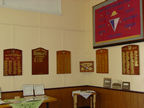
|
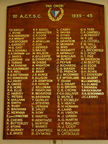
|
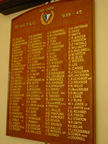
|

|

|
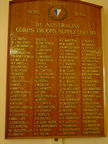
|
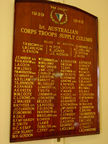
|
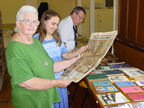
|
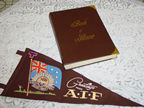
|
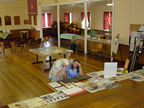
|
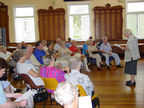
|
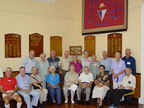
|
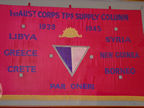
|
"PAR ONERI"
1ST AUSTRALIAN CORPS TROOPS SUPPLY COLUMN
2nd. Australian Imperial Force
Record of Service
Researched and written by Jack Kelso QX6794
During April 1940, Officers of the Australian Army Service Corps, Permanent Army, were instructed to form the 1st. Australian Corps Troops Supply Column, of the 2nd. A.I.F. Recruiting began immediately and by the end of June 1940 the full strength of the unit had been attained. In July the unit was formed into Column Headquarters, Number 1 Echelon consisting of A and B Sections, Number 2 Echelon consisting of C and D Sections, E wireing Section and F Workshop Section. Training was completed by the 26th. December 1940 when the unit marched out of Redbank Camp to board a train which was to transport the troops to Sydney, where they embarked on the Queen Mary which was to transport the unit to Tricomalee, on the east coast of Ceylon. Here the unit disembarked from the Queen Mary to embark on the Rajula, which was to transport them to El Kantara, a port on the Suez Canal. At this port the troops left the Rajula and boarded a train which was to carry them to El Majdal in Palestine. Here the troops mounted trucks which transported them to Camp Hill 69, which was the base came. By this time it was early February 1941.
Within a couple of weeks, half of the members of C and D Sections departed from Camp Hill 69 for service in North Africa and by the end of February they were transported to Greece, as the advance party for the Column. Meanwhile during the first week in March 1941, another 100 troops with 85 vehicles also left Camp Hill 69, the remainder of C and D Sections to serve in the western desert of North Africa, whilst the members of E Section remained in a transit camp at Ameriya to await transport to Greece. However before this came about, evacuation from Greece became obvious by the middle of April and E Section returned to Camp Hill 69. During the Greece and Crete Campaigne, ten (10) were killed in action, twenty (20) were taken p.o.w. (prisoners of war) whilst twenty two (22) escaped via Crete back to Alexandria in Egypt. They also eventually returned to Camp Hill 69.
During June/July 1941 the advance into Syria took place and members of A and B Sections were involved, some driving as far north as the border of Turkey. By October, with our own reinforcements and with those from the 2/15th. Infantry Battalion the Unit was now up to full strength.
After the Japanese entered the War it was realised that there would not be the long lines of communication as in the Western Desert, so the "Supply Column" was disbanded and with the inclusion of an Ammunition Company became three (3) companies. 1st. Australian Corps Troops Supply Company, the majority of E Section became the 1st Australian Corps Troops Petrol Company and the Ammunition Company became the 1st. Australian Corps Troops Ammunition Company.
During the months of February to April 1942, all three (3) companies returned to Australia and finally met up to be encamped at Billy Goat Hill, a site 14 miles west of Ipswich, from which all companies were engaged. In over twelve (12) months the companies gradually moved closer to Brisbane with transport duties continueing (sic) in and around that City.
In June 1943 all three (3) companies were disbanded; the Supply Company became the 2/34th. Australian General Transport Company and the Petrol Company and the Ammunition were combined to form the 2/33rd. Australian General Transport Company. By this time both Companies were camped at Chermside.
On the 16th. July 1943 the 2/34th. A.G.T. Coy departed from Chermside Camp and arrived at Port Moresby, New Guinea on the 23rd. July 1943. A week later the 2/34th. departed from Port Moresby to be transported up the Lakekamu River by barge to Bulldog from where they were engaged across the Owen Stanley Range to Wau.
The 2/34th. was specifically selected to be engaged in these duties until the 20th. May 1944, when the Company returned to the Atherton Tableland. Most members, in accordance with the 5 year service to include 3 years overseas were discharged from the 2nd. A.I.F. during 1945.
Meanwhile, the 2/33rd. A.G.T. Coy departed from Chermside Camp on the 2nd. August 1943 bound for Port Moresby with the specifical duty of transporting the Infantry Battalions of the 7th. Australian Division from their camps in Pom Pom Valley to Jackson's Airstrip, five (5) miles from Port Moresby, where the Infanteers would board DC 3s Douglas Aircraft to Nadzab from where the Japanese would be driven from the Markham and Ramu Valleys. On the 7th. September 1943, whilst taking off from Jackson's Airstrip an American Liberator Bomber, fully laden with bombs crashed into our convoy of the 2/33rd. A.G.T. Coy with Infanteers aboard, resulting in seventy two (72) killed and wounding Sixty Two (62) which included 4 drivers killed and many drivers wounded.
By the end of September 1944, all the specific duties of the 2/33rd. A.G.T. Coy were completed and the Company returned to Chermside Camp, where the company was disbanded. With reinforcements, four (4) transport platoons were formed.
The former Ammunition Company became the 2/41st. and the 2/42nd. Australian Transport Platoons, whilst the original E. Section, Petrol Company, formerly the B. Section of the 2/33rd became the 2/43rd and the 2/44th. Australian Transport Platoons. The 2/44th. served with the 9th. Australian Division in Labuan and Brunei whilst the 2/43rd. served with the 21 Brigade of the 7th. Australian Division after landing at Klandasan/Balikpapan on the 1st. July 1945.
In accordance with the 5 year plus 3 plan the majority were honourably discharged from the 2nd. Australian Imperial Force by late 1945 or early 1946.
They shall
not grow old as we that are left grow old
Age shall not weary
them nor the years condemn
At the going down of the sun and in the morning
WE WILL REMEMBER THEM
LEST WE FORGET
|
1 Supply Column Motto - "PAR ONERI" Equal to the Task |
ANZAC Day 2002
|
|
Enoggera Memorial Hall
|

|

|

|

|

|

|

|

|

|

|

|

|

|